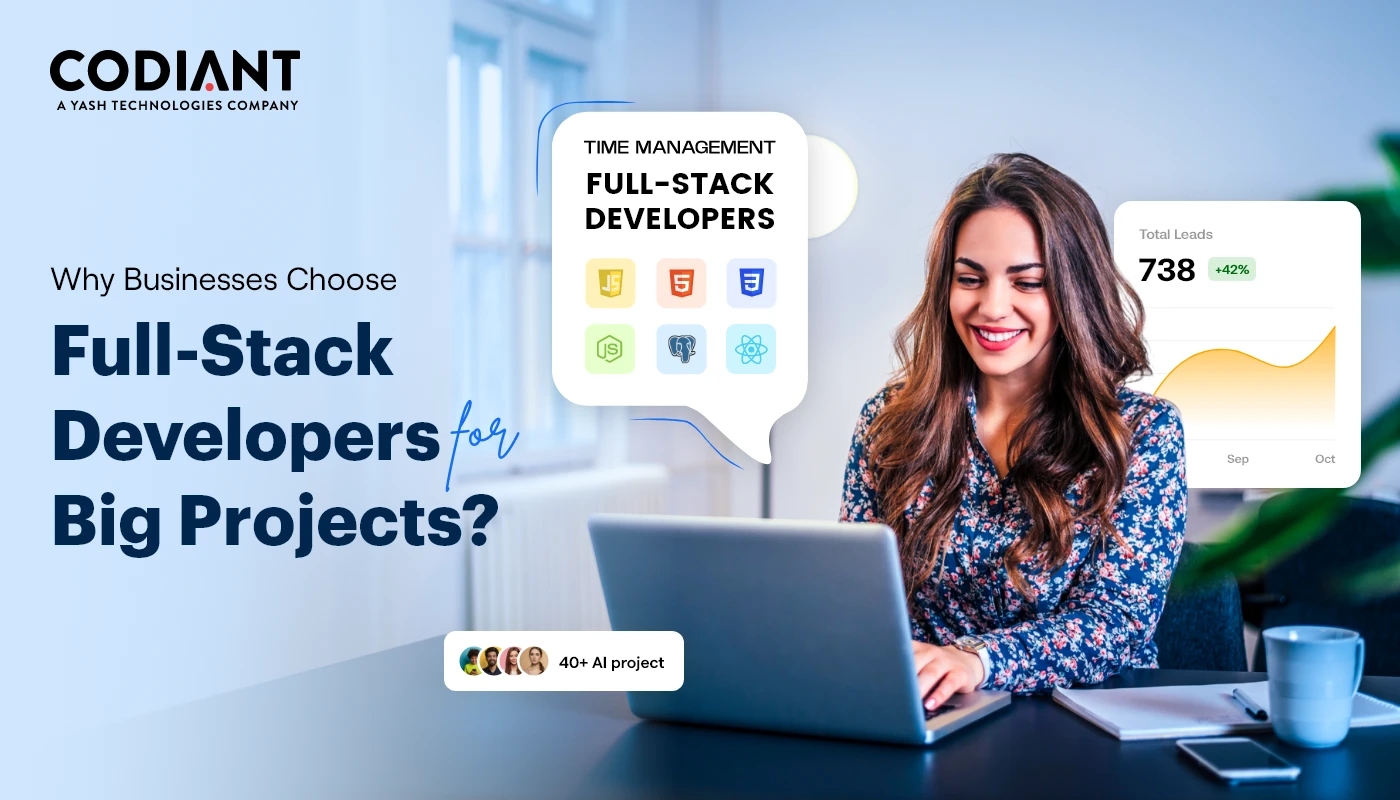Best Practices To Build REST API from Scratch
Table of Contents
Subscribe To Our Newsletter

The REST API was first introduced in the year 2000, and now it has its presence in almost every application. It can drive any type of application and is no less than a backbone which facilitates data transfer, storing, data management, and other activities in the app. As the study suggests, globally about 45% of data transfer takes place in association with APIs only.
The planned and strategic placement of REST API integration is the major reason behind the promotion of numerous tech platforms. While considering the fact, till now there are no set guidelines or defined standards to develop the APIs. During these years, a great number of developers tried their hands in custom API development to deliver enhanced solutions. But, not all made remarkable entries.
It’s been more than two decades, since REST API entered in the tech market, despite that developers are still struggling to achieve perfection in delivering API development solutions. Thus, while keeping all these concerns in mind, we’ve prepared a list of best practices to build REST API from scratch. The following instructions will support you in delivering top-rated REST API development services.
What is REST API?
REST- Representational State Transfer, was first presented by “Roy Fielding” in 2000 while pursuing his Ph.D. The REST API is a medium for two computers to communicate over HTTP (Hypertext Transfer Protocol), in the same way clients and servers communicate.
Through REST API, the data access request is generated through message and relies on HTTP standards to describe the messages. Usually, the REST API design is considered as a simple request/response method, where each request receives an appropriate response.
REST is resource-based, that does not use heavy bandwidth such as SOAP (Simple Object Access Protocol) does. This makes RESTful APIs a better option to use over the Internet. There are a variety of APIs that have a difference in usage and it may work for you. So, always consider giving your users a handy API that can be used easily and comprehensibly.
Characteristics of REST APIs
1. Easy to View and Work With
A properly designed API is quite smooth and uncomplicated to work with. As, with repeated working on the same API, trains developers to easily understand and learn its resources and operations quickly. Overall, an ideal API has to be legible and easy to use, so that developers can effectively work with it.
2. Minimizes Chances of Misuse
The cases of writing wrong codes will almost get diminished when you integrate and implement your API while following best practices and having a clean and crisp design. In addition to that, it will provide valuable feedback while eliminating the requirement of enforcing any strict guidelines on the end users’ API.
3. Complete and Concise
A complete REST API makes it easier for developers to build the complete application with available data. Since development requires time, therefore developers prefer to work with the existing API. This strategy is quite a time-saviour for both developers and organizations to work with the available APIs initially. After having a brief overview of REST API and its characteristics, the developers would like to develop or integrate an API with their system.
Thus, to ease and streamline the API integration, below are the some best practices that an API developer or REST API development service providers can follow to develop the most suitable and easy-to-understand API. Let’s explore these REST API development services practices in detail.
Best Practices To Build REST API
1. Use JSON Format for Receiving & Sending Data
The RESTful API supports multiple data types, such as plain text, CSV, Octet Stream, XML, JSON, ZIP, XML, etc. However, JSON is considered as the standard for data transfer, globally. So, build the API that accepts only JSON payloads and returns a JSON response. JSON (JavaScript Object Notion) – among all data types is the simplest programming language and format to use and is legible too.
Despite that, not all APIs use JSON format. But, many developers are also inclining or replacing their existing SOAP (Simple Object App Protocol) with REST API design.
JSON is highly compatible and can be used by any programming language. It is easy to parse and extends supports to most of the existing frameworks to make REST API integration quite a straightforward experience. In addition to that, it supports a wide range of browser compatibility. Hence, it is considered one of the best practices for REST API development.
2. Use ‘Noun’ Instead of ‘Verb’
It is quite evident that we all know the difference between a Noun and a Verb. Well, the reason for using Nouns for API endpoint names rather than naming a verb is that – the API method is already passing the verb, so also naming the API endpoint with verb won’t be an intelligent call because nouns will clearly demonstrate what is the functioning of each endpoint. The REST API development is also termed as Resource-based API prototype.
While working on an application, the developers have to work on its collections and resources. The actions on such resources are named by using HTTP methods, which include GET, PUT, POST, DELETE, and PATCH. This leads to the construction of endpoint URL. Considering these methods, the correctly designed endpoint will look something like this;
Correct Method:
- GET/articles/123
- PUT/articles/123
- POST/articles
- DELETE/articles/123
- PATCH/ articles /123
Incorrect Method:
- GET/addArticle /123 (GET function is used to read data, not to change its state in any situation)
- GET/DeleteArticles/123
- POST/Delete AllArticles
- POST/Articless/123/delete
3. Name Collections using Plural Nouns
Using plural nouns to build REST API, is not only just the best practice rather is the need of the hour. The REST API developers prefer plural nouns to address the collection. The plural nouns make it easier for the user to understand that it is basically a collection, not a single entity. For Example;
- GET/cabs/xyz
- POST/cabs
- Get/cabs
‘OR’
- GET/cab/xyz
- POST/cab
- GET/cab
As an owner, you can consider your API data as a collection of a variety of resources from your customers. That’s why the name collection should prefer using plural nouns.
4. Define & Document Your API at One Place
Define and document your API details and features at a single place. It is fruitful, not only for developers but also for users too. As developers like to be aware in advance of what they are dealing with while establishing integration between the application and API. On the other hand, these documents will educate users too, by letting them aware of what is made available through the REST API.
The API documentation can provide details about the existing methods and endpoints, along with request/response and other details. Make sure to publish the API document as a browsable web page with interactive options. Try to include interactive guides, tutorials, and easily accessible resources.
Evidently, the more API document is organized, the API access will become easier for your users. These API documents will serve as a life savior for developers to get aware of all the existing endpoints at any time. Try to keep the API document concise and simple, so that any non-technical person can understand it easily. There are many API documentation tools, some of them are- Swagger UI, ReDoc, DapperDox, Swagger Hub, etc.
5. Error Handling
In the development phase, the project is always prone to errors, no matter what your expertise is. Likewise, in REST API development the developers have to experience errors, and it requires a skill set to handle errors. The effective API integration will always return accurate HTTP error codes and define the nature of the error as well. It is always aimed to detect error as soon as possible and debug it, to minimize the development cost and time.
Sufficient information about errors will help to analyze the cause and nature of the raised error. Usually, the error code or HTTP status is enough for developers to analyze by a small informative message, which makes it easier for developers and the user as well to understand and define the issue in layman language. An error handling code should be associated as;
- Error: a unique error identifier
- Message: a short, meaningful, and readable message
- Detail: long message explanation
For example, 400 Bad Requests: This error defines that the client-side input has failed documentation/validation. Or, 401 Unauthorized: This error arises when the user is unauthorized for accessing a resource. Usually, it returns when a non-verified user is trying to access the platform. Overall, there are about 71 different HTTP status codes that are defined with clear error messages.
6. Allow Sorting, Filtering, Pagination, and Field Selection
Some of the important features of API design are Sorting, Filtering, Paging, and Field Selection. A single API can be used to perform all these tasks at a time, to fetch the data based on consumers’ requirements. Sometimes, an API’s database can be very huge and might slow the data fetching process.
1. Filtering- Narrow down the result, based on the query under a specific parameter, e.g., date, location, contact number, etc.
Example: ET /users?genre=action (filter movie list under ‘action’ genre)GET /users?release_date=2020-10-10 (filter the result of movies released on 10/10/2020, available on that specific platform)
2. Sorting- sort the available data in ascending or descending order under a specific parameter, such as date, age, weight, etc.
Example: GET /users?sort=joining_date:asc (sorts employee joining list in ‘ascending order’)GET /users?sort=joining_date:desc (sorts employee joining list in ‘descending order’)
3. Paging- use ‘limit’ to define the number of results on a single page. It also uses ‘offset’ to define the specific part of the whole database displayed under result.
Example: GET /users?limit=500GET /users?offset=5
4. Field Selection- is a convenient REST API development function that allows to access specific fields to achieve a definite objective.
Example: Require a list of all the movies uploaded in the year 2018 with specific details i.e., movie name, star cast, language, and director. Then the search query will look something like this;GET/ movies?fields=year, movie_name, star_cast, language, director
7. Using SSL/TLS Security Layers
Data Security is one of the major concerns for all businesses or any API developer. Thus, using SSL (Secure Socket Layer) and TLS (Transport Layer Security) for data encryption is one of the best practices to build REST API. Both the layers support generating a secure connection with public and private key for the users. It is the major priority, as a security breach in terms of data theft or cyber-attack could cost millions of dollars and exposure of the user’s sensitive data and servers’ extremely private details.
The SSL certificates are usually available for free for the first year and apart from that are mostly available at cheap prices. The server can load SSL certificates easily. The security layers assure the security of API accessibility globally, especially on unsecured or non-encrypted networks. SSL/TLS layers ensure encrypted communication and data authentication, with simple tokenization i.e., without signing for each API request.
8. API Versioning
REST API Versioning allows developers to introduce updates in the data structure or specific actions. As the project is under development phase, the requirement evolves which might lead to introducing some changes in the API or managing more than one API version. One of the most common API versioning systems in web development is ‘Semantic Versioning’. Ideally, an API never attains stability or we can say the updates and changes in an API are unavoidable.
These versioning facilities will also provide flexibility to your users, such as they can prefer the most suitable API version rather than enforced to adapt the current version. Now, the concern that arises is how to manage and implement the changes. Therefore, to keep track of all the updates, it is suggested to keep each versioning details under a well-documented form. The example of semantic versioning of a RESTful API follows a method of representation, i.e., 1.0.0, 1.3.0, 2.1.2, 3.2.4, etc. In this format, the first number represents the primary/major version, the second number represents the secondary/minor version, and the third number represents the patch version.
Conclusion
A good API development solution is not only about delivering the best technicalities but also providing a good user experience with an accessible and usable REST API design. There are a number of API options and the versions available and each version or method has its own relevance.
Hence, it becomes crucial to evaluate the requirements and then select the most suitable API solution to integrate with the application. To evaluate such requirements, any assistance in Custom API Development Services, or in-app development services, you can connect with proficient developers of Codiant.
Featured Blogs
Read our thoughts and insights on the latest tech and business trends
Why Hiring Full-Stack Developers Makes More Sense for Complex Projects
- October 17, 2025
- Staff Augmentation
Let’s start with the obvious- software projects are messy. They never roll out like those neat diagrams in pitch decks where every arrow points forward and nothing breaks. Complex projects - think SaaS platforms, enterprise... Read more
Generative AI in Insurance: Benefits, Risks & Use Cases
- October 15, 2025
- Artificial Intelligence
In a Nutshell: Generative AI is giving insurance a major upgrade - turning hours of paperwork into minutes of smart automation. It helps insurers read claims, write summaries, and understand risks faster than ever before.... Read more
AI in Warehouse Management – Challenges, Benefits, Costs
- October 10, 2025
- Artificial Intelligence
In a Nutshell: Warehouses are under pressure from labor shortages, rising costs & real-time order demands. Traditional systems can’t keep up - AI brings predictive, responsive & automated solutions. AI benefits include sharper forecasting, faster... Read more




